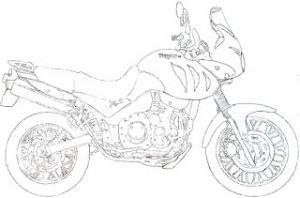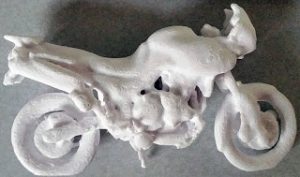 |
| Sunday morning with a 3d printer – I get a kick out of making things work. |
 One of the best parts of my job is that I get to lay my hands on leading edge technology in order to figure it out so I can teach it. I’ve always been an early adopter, if no no else has it I’m interested – more so if everyone else is afraid of it. When most people didn’t know that TVs had alternate inputs I had a home computer with a printer. When everyone was crying about how fuel injection meant no one could customize their vehicles any more I was hacking the on-board computer and using it for diagnostics and more horsepower.
One of the best parts of my job is that I get to lay my hands on leading edge technology in order to figure it out so I can teach it. I’ve always been an early adopter, if no no else has it I’m interested – more so if everyone else is afraid of it. When most people didn’t know that TVs had alternate inputs I had a home computer with a printer. When everyone was crying about how fuel injection meant no one could customize their vehicles any more I was hacking the on-board computer and using it for diagnostics and more horsepower.
Nowadays it’s all about how digital tools are making micro/bespoke manufacturing more possible. Where once you needed an engineer, some machinists and a couple of hundred thousand dollars to build complex components, now you need twenty grand and a willingness to pick up some very easy to manage software. The entry into machining your own, custom components has become much easier.
Not only are digital tools handing back basic production to individuals, they are also allowing companies to explore levels of precision in manufacturing that seem almost science fictional:
We’ve had 3d printers in the classroom now for a couple of years, and we find them invaluable for prototyping and even developing 3d thinking (not something students take to naturally).
I suspect the wedding-cake style melting-plastic-through-an-extruder 3d printer is an evolutionary dead end (there is only so much you can do to speed up a printing process that works around cooling plastic). Fortunately, the next step has already happened:
… I’d love to get my hands on one of those.
Another building tool I’d like to try is a digital laser cutter. Like other manufacturing tools, digital laser cutters have been tumbling in price. Coming out this year is a desktop laser cutter called the Glowforge that’ll introduce laser cutting, etching and fabrication to many more people. At only about $4000, this undercuts previous industrial units by tens of thousands of dollars.
With this kind of technology available to many more people, I get the sense that the garage of the future will allow us to build things that only get churned out by factories at the moment. When I’m at the point that I can custom manufacture and laser etch bespoke motorcycle hard parts and print my own fairings, I’ll feel like my garage can keep up with my imagination.
A good guess might be the garage scene from Big Hero 6:
We’re on the verge of escaping from the mass-production Twentieth Century. One day you’ll be telling your grand kids that we had to buy shoes that weren’t custom printed specifically for your feet, and they won’t believe you.
| Recent advances in processing power and optics mean VR is finally (after decades of promise) arriving at a consumer level. |
Last week I discovered that I’m going to be able to set up an HTC Vive in the lab. We’re doing it so we can better craft the 3d models we’re building in Unity and Blender, but immersive simulation could offer a lot of opportunities in the classroom beyond 3d modelling. The emotional impact on a student walking across Vimy Ridge the day after, or walking through Cambodia’s killing fields, or standing on the Moon and looking back at the Earth, get me revved up about making VR work in the classroom.
From a motorcycling perspective, an immersive simulation of the MotoGP circuit on Valentino’s bike would offer fans a new level of appreciation for the sport. Preparing for an overseas ride by tasting the trip virtually first offer opportunities for safety preparation that simply don’t exist right now, especially if you’re trying to wrap you head around new signs and riding on the wrong side of the road.
We’re on the verge of the future, and I get another taste next week, I can’t wait!
3D printing
motorcycle 3d printing: http://3dprintingindustry.com/2015/08/03/motorcycle-3d-printing-picking-speed/
https://3dprint.com/65937/3d-printed-motorcycle/
http://www.stratasys.com/resources/case-studies/automotive/klock-werks
https://all3dp.com/3d-printed-motorcycles-know/
https://grabcad.com/library/128705
Virtual Reality
https://youtu.be/-Sd3wXNjLtk
http://motorbikewriter.com/victory-motorcycle-virtual-reality/
http://www.lifebuzz.com/virtual-motorcycle/
http://mashable.com/2015/03/13/oculus-victory-motorcycles-sturgis/
http://www.cnet.com/roadshow/news/skully-opens-pre-orders-for-high-tech-helmet/



















